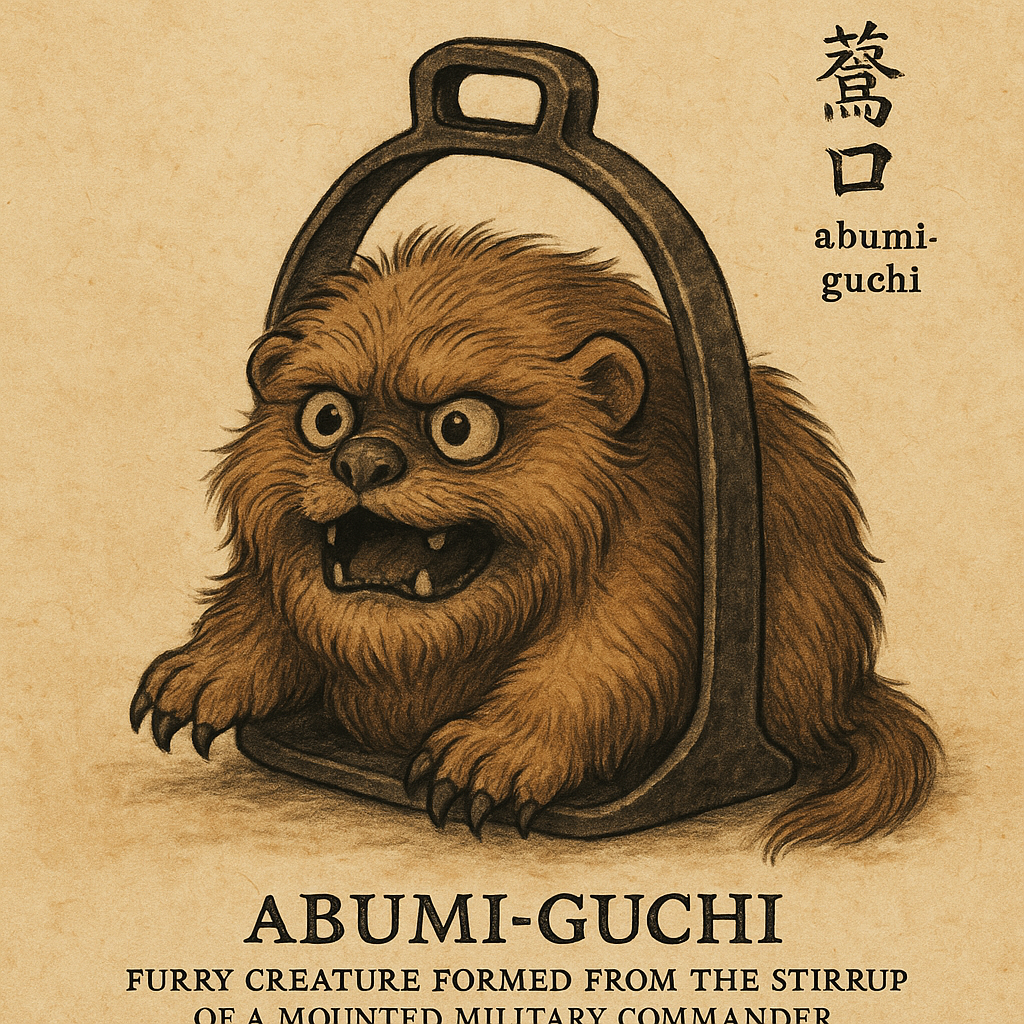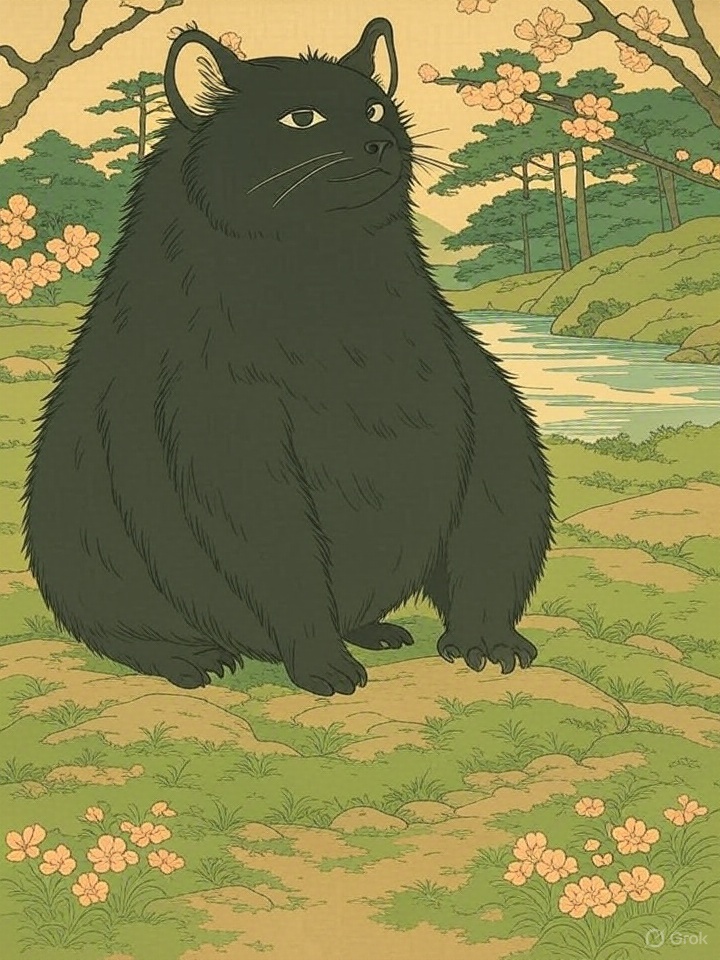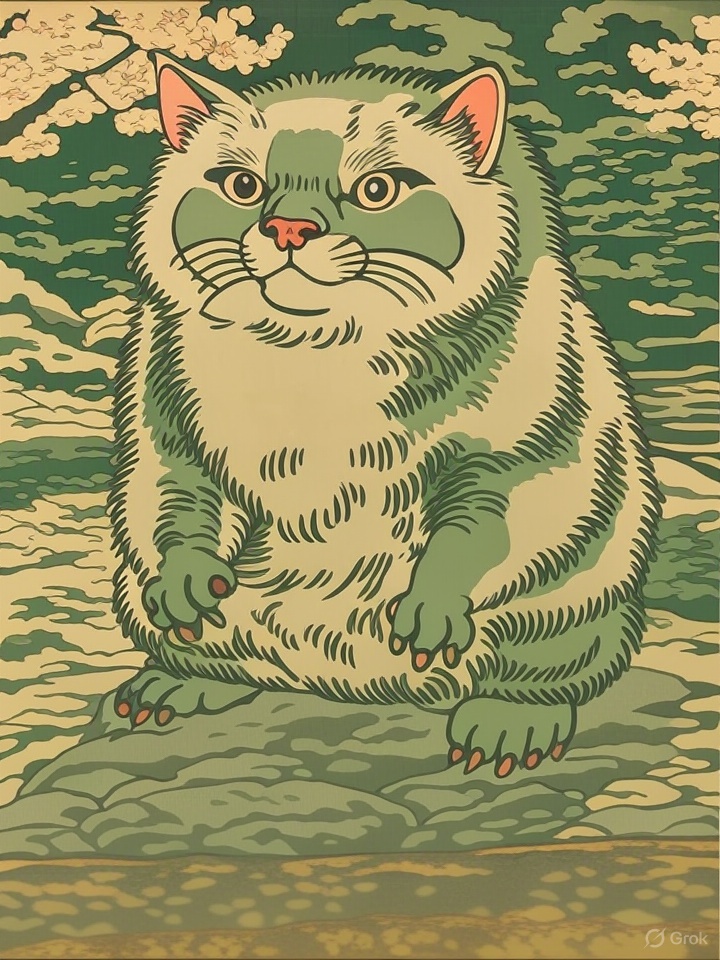Description
The Abumi-guchi is a small, furry yōkai that is said to be formed from an abumi—a traditional Japanese stirrup used by mounted samurai. Specifically, it arises from the stirrup of a fallen warrior, one who died in battle and never returned to reclaim his gear.
Mythical Origins:
According to legend, when a samurai dies in battle, his loyal equipment, especially parts like the stirrup, may linger with a strong attachment. Over time, this attachment manifests into a sentient creature—a yōkai driven by loyalty, loss, and waiting.
Appearance
- Small and furry, resembling a tufted animal or a hairy creature with a face.
- Sometimes shown with limbs or a mouth, though depictions vary.
- Often found lying near the remains of armor or old battlefields.
Behavior
- The Abumi-guchi is not aggressive.
- It is said to wait eternally for its master to return, symbolizing unwavering loyalty and the tragedy of war.
- Some believe it can emit soft whimpering sounds or shuffle about quietly.
Symbolism
- Loyalty: Represents the unwavering devotion of a warrior’s tools.
- Sorrow: Reflects the sadness of lives lost in battle and items left behind.
- Ghosts of War: Part of a larger group of yōkai that personify relics or emotions tied to death in combat.
Cultural Notes
- The Abumi-guchi appears in Toriyama Sekien's Gazu Hyakki Tsurezure Bukuro, a famous 18th-century collection of yōkai illustrations.
- It's an example of tsukumogami—tools or objects that, after 100 years or through strong emotional attachment, gain sentience.




